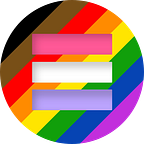From the desk of Rob Wyatt, CTO of The Last Gameboard
It’s been a great month at the lab. We have been inspired by our backers and the incredible support of the Kickstarter community and now are moving ahead at lightning speed. We are on schedule and will be releasing an SDK to developers in January. We want to take this opportunity to give you a glimpse of our journey and give you a behind the scenes look at our process.
Our SenseScreen™ is at the core of our technology and every piece of it is custom. Not only was it designed specifically or our LCD dimensions, the design of the capacitance layers within the glass along with the design and attachment of the controller is all custom. “Needless to say, these touch screens from the manufacturer have caused some anxiety around the office, the big question was would they work when they got here? And would they work as well as our in-office prototype?”
The following photos are raw. Our “unboxing” photos are on my cell phone. They are unedited so you get to see what I saw.
Opening the box…….
This one has development boards attached to allow us to interface with the various controllers via USB.
Size and fitment check with the LCD, this is the first time they have ever been paired.
Don’t analyze these pictures too much — they are only prototypes. We are going to do another run and reduce the bezel size. Now we have verified the fitment the next batch will have the glass touch controller and the LCD optically bonded into a single unit. These bonded screens will be the units that go out to developers.
The goal for the final design is to get the screen bezel as small as possible so there’s minimal dead area when you put multiple boards together. To shrink the bezel size we have to change the manufacturing process and there is a huge risk here. To mitigate that risk we decided to spin the first screens with a normal bezel and we use these screens for development and in parallel design the new screens. We expect we’ll probably have to do a 3rd and final design of the screen for final production.
We are always Testing, Testing & Playing!
The even better news is that other than a few teething problems the SenseScreen™ worked beautifully! Our Linux driver had a few teething problems but they were resolved. Here is a visualization of the capacitance field on the screen with hand touching the screen.
The primary focus in the lab right now is handling and quantifying the data coming from the screens, implementing more functionality in our driver, and tweaking the analog side of the controllers to get the best signals we can.
The screens appear to be far more sensitive than we ever thought they would be. Do you want to take a guess at generated the following images??
The first image is a porcelain coffee mug sitting on the screen. The second is a Sharpie laying on its side!! In both cases, the object is an electrical insulator and wasn’t being touched. To be detected, objects don’t need to be touched, they only need to interfere with the capacitance field on the screen and then our object detection and AI systems do the rest. We can also detect tiny objects, the following is the capacitance of the tip of a Phillips screwdriver (center bottom).
These might seem like silly tests but it all folds back into the user experience. We originally didn’t think we’d be able to reliably detect objects that weren’t being touched but because we can it completely changes how we interact with physical pieces. The original game pieces we designed were based on the capabilities of an off the shelf touch screen and because of that, they are bigger than they need to be. With the capabilities of our SenseScreen™ we can go back and redesign the physical game pieces to be smaller and more reliable and we aren’t limited to any number of touches so you can put as many objects on the screen as you like.
Even though we are an AOSP (Android) platform, most of the system-level development is being done on Linux and we periodically verify that it works on Android. We do this because its easier and quicker do system-level work in Linux. All application and content development will be done in Android, Gameboard developers will never see these Linux test apps and will never have to use the development interface boards.
The final result!
The software stack and the APIs we provide to developers, the developer program itself will all be covered in future updates. We want to hear from you and stay in contact with our backers so we’re opening a Discord channel and on there you can ask any questions you like.
That’s it until next time, we have a lot to do! We’ll be at CES with hardware and hands-on demos! We’d love to meet everyone in person at booth 52831 in Eureka Park at the show.
www.lastgameboard.com
